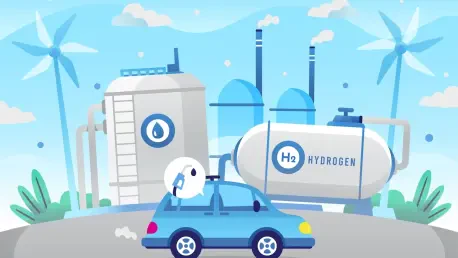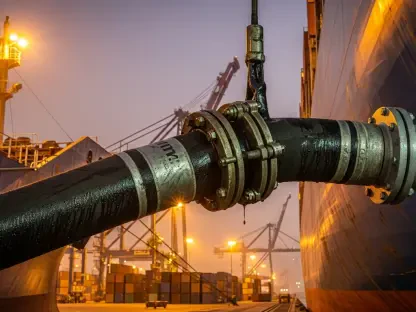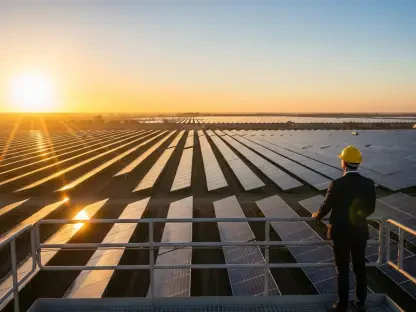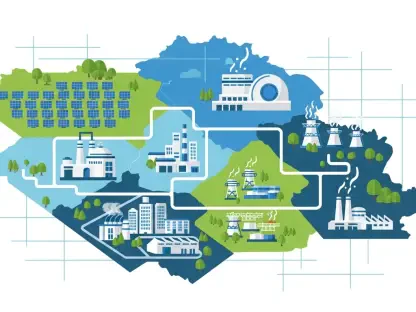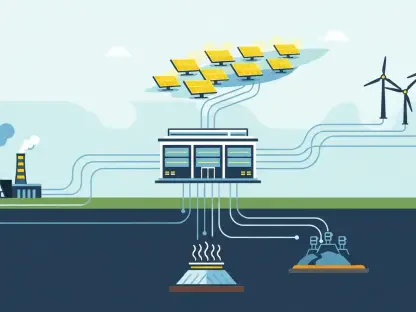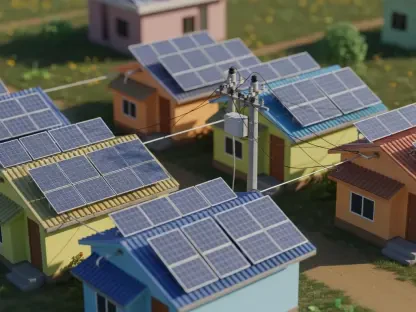In the realm of renewable energy, Christopher Hailstone stands out as an authority with extensive experience in energy management and electricity delivery. His insights into grid reliability and security make him a valuable contributor to the discussion on the transformative green hydrogen plant project in Yanbu, Saudi Arabia—a key venture in the nation’s strategy to emerge as a global clean energy leader.
What is the scope and main objective of the green hydrogen plant project in Yanbu, Saudi Arabia?
The green hydrogen plant in Yanbu is poised to become a cornerstone in Saudi Arabia’s clean energy strategy. The main objective is to significantly boost the country’s capacity for producing green hydrogen, ultimately positioning Saudi Arabia as a key supplier on the international energy market. With the capability to produce 400,000 tons annually, this project is an ambitious expansion on the existing efforts, aiming to double the capacities seen in the NEOM initiative.
Can you elaborate on the roles Técnicas Reunidas and Sinopec will play in this project?
Técnicas Reunidas and Sinopec are tasked with executing the front-end engineering design (FEED), which is a crucial early phase in complex industrial projects like this one. Their responsibilities entail devising detailed designs and plans that will guide the construction and operational phases. Their expertise will help ensure the technical and economic feasibility of the plant, setting a strong foundation for its future success.
How will this project contribute to Saudi Arabia’s strategy to become a global clean energy leader?
This project is a pivotal step in Saudi Arabia’s broader plan to adopt cleaner energy sources and diversify its economy away from oil dependence. By advancing in green hydrogen technology, the nation aims to secure a robust position in the emerging global market for renewable energy. The ability to produce and export substantial quantities of green hydrogen will help Saudi Arabia capture a significant share of the global market, thereby reinforcing its leadership.
What is the expected production capacity of the new green hydrogen plant, and how will it compare to the existing NEOM hydrogen initiative?
The Yanbu plant is designed to produce up to 400,000 tons of green hydrogen annually, effectively doubling the capacity of Saudi Arabia’s existing NEOM initiative. This increased production not only reflects the rapid development ambitions within the country but also underscores the seriousness of Saudi’s commitment to becoming a leader in green hydrogen.
How will the electrolysis process be driven, and what are the energy sources planned for the future?
Initially, the plant will not draw directly from solar or wind sources, but it is planned to transition to renewable energy as the project progresses. This adaptation will involve utilizing 4 gigawatts of energy for the electrolysis process, aiming for eventual alignment with renewable sources, which is essential for the vision of producing truly green hydrogen.
Why is the conversion of hydrogen into green ammonia significant, and how will it aid in exporting the product?
Converting hydrogen into green ammonia is a strategic move that enhances the feasibility of international transportation and export. Green ammonia is more stable and easier to ship over long distances, making it a practical medium for Saudi Arabia to reach international markets. This process not only leverages existing ammonia infrastructure but also opens avenues for broad market penetration.
Could you give some details on the front-end engineering design (FEED) phase of this project?
The FEED phase involves substantial preparatory work that defines the scope, determines cost estimates, and assesses technical requirements. Over a period of ten months, Técnicas Reunidas and Sinopec will exhaustively analyze and plan every facet of the plant, ensuring that it meets all operational, environmental, and economic objectives before construction commences.
What is the timeline for completing the FEED work, and what will be the next steps after that phase?
The FEED phase is scheduled to be completed within ten months. Once finalized, it will transition into a detailed construction proposal worth several billion euros. Post-FEED involves securing approvals, solidifying project financing, and ultimately proceeding to the construction phase, which will bring the project closer to operationalization.
Why is the inclusion of a desalination plant and port terminal important for the success of this project?
The desalination plant ensures a reliable water supply for the electrolysis process, which is vital in the arid conditions of Saudi Arabia. Meanwhile, a port terminal is critical for facilitating the export of green ammonia, thereby connecting Saudi Arabia’s production capabilities with international demands. Both components are essential for the plant’s operational efficiency and its integration into global markets.
In what ways does this project align with Técnicas Reunidas’ existing work and experience in the Middle East?
This project further solidifies Técnicas Reunidas’ extensive involvement in the Middle East’s energy transition journey. The company is leveraging its experience from previous projects and applying it to innovative solutions in green hydrogen production. This alignment not only enhances their regional portfolio but underscores their commitment to playing a leading role in the region’s move toward sustainable energy.
How does this project fit into Técnicas Reunidas’ current portfolio in Saudi Arabia?
It complements their existing engagements by adding a major renewable energy project to their diverse collection of contracts, which already span over €2.2 billion in Saudi Arabia. This addition signifies a strategic expansion into the green technology sector, reinforcing their position as a versatile and capable player in the Saudi market.
What challenges do you anticipate in integrating the various systems required for the project, such as electrolysis, water treatment, and export infrastructure?
The integration of these systems presents a number of technical and logistical challenges, chiefly in ensuring seamless operation and efficiency. Each system, like electrolysis and water treatment, must be finely tuned to work in harmony, necessitating robust infrastructure and advanced control systems to manage production and export processes effectively.
How critical is the success of this Yanbu plant for Saudi Arabia’s goal of capturing 10% of the global hydrogen export market by 2030?
The success of the Yanbu plant is central to their ambitious market capture goal. It represents a substantial part of the production capacity needed to achieve this target, and its operational success will also serve as a benchmark for future initiatives. A successful launch and stable operations will greatly enhance Saudi Arabia’s ability to meet its export ambitions.
How does the competition in the region, particularly from countries like the United Arab Emirates and Morocco, impact your strategy for this project?
Given the regional competition, it is critical that Saudi Arabia differentiates itself through scale, efficiency, and technology. By prioritizing these factors in the Yanbu project, Saudi Arabia can ensure its offering is competitive. Additionally, the focus on green ammonia provides a unique edge in terms of marketability and export readiness.
How will this initiative help in reducing Saudi Arabia’s reliance on oil and support its transition to clean energy?
This initiative embodies a strategic shift away from oil dependence by diversifying the energy portfolio with sustainable alternatives. As the plant moves towards full operational capacity, it will significantly contribute to reducing carbon footprints and promoting renewable energy. Ultimately, it aids in restructuring Saudi Arabia’s energy sector for a future less reliant on fossil fuels.
Do you have any advice for our readers?
Stay informed and curious about developments in renewable energy. The industry is rapidly transforming, and understanding these shifts can open opportunities whether you’re involved directly in the sector or simply interested in the future of global energy narratives.
